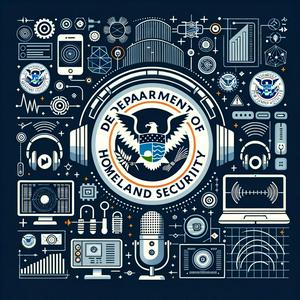Proposed DHS Rule Changes Impact International Students, H-1B Visas, and Federal Property Protection
Thanks for joining us for your DHS Weekly Brief. The top headline this week: The Department of Homeland Security just proposed a sweeping rule change that could dramatically affect international students, exchange visitors, and temporary workers in the United States. On August 28, 2025, DHS announced plans to replace the current “duration of status” rule for F and J visa holders with fixed periods of stay, capped at four years. This means international students and exchange scholars would now be admitted only until their program end date, plus a 30-day grace period—shortened from the previous 60 days for F statuses, aligning more closely to current J rules, as detailed by the Office of International Students & Scholars at Yale.For context, the “duration of status” provision has provided flexibility, allowing eligible students and researchers to remain in the US as long as they maintained valid documentation and made progress in their studies or research. Under the new proposal, extensions would require a formal application to USCIS. If someone fails to apply in time or overstays, they would begin accruing unlawful presence immediately after their specified end date—posing significant risks for future immigration benefits.This change is still pending. Public comments are open until September 29th for the proposed rule, and until October 27th for related paperwork issues—the final policy will reflect input from stakeholders, especially educational institutions and international organizations, who are expected to weigh in heavily.Another major development this week: DHS is also moving to overhaul the H-1B visa system. According to the law firm K&L Gates, the department wants to move away from its random selection process toward a weighted lottery system, giving more favorable odds to applicants whose jobs command higher prevailing wages as measured by Department of Labor census data. Employers seeking to fill entry-level roles—including many recent college graduates—could find the process more challenging, while senior-level positions would see improved odds of selection. Public comments for this proposal are open until October 24th, and advocacy groups urge affected businesses and organizations to participate.Federal property protection is tightening as well, with a new DHS regulation going into effect January 1, 2026. This rule, published in the Federal Register, updates procedures and authority for safeguarding federal buildings and infrastructure nationwide.What’s the bottom line for citizens? International students may face tougher hurdles to maintain or extend their stays, impacting US universities and research labs that depend on global talent. Businesses, especially in tech and research, should closely monitor H-1B reforms, as they could reshape recruitment at entry and mid-career levels. State and local governments may see indirect effects as international student populations shift, with economic impacts for communities that host major campuses. Internationally, these visa changes could shape how the US is viewed as a destination for innovation and education.DHS officials emphasize their intent is to safeguard national security while “ensuring a fair, predictable, and transparent immigration process.” Advocates argue such reforms should balance security with continued openness.Listeners are encouraged to submit their perspectives. If you’re a student, educator, employer, or concerned citizen, now is the time to visit the Federal Register to comment on these proposed rules. Mark your calendars: September 29th for student and exchange visitor policy feedback, October 24th for H-1B changes. Stay tuned for more updates as DHS reviews comments and moves toward final decision-making.To dive deeper or get involved, check the DHS website, university international offices, or your professional associations. And if you have a question or experience you want to share, let us know.Thanks for tuning in. If you found today’s update useful, subscribe so you never miss a briefing on policies directly affecting you. This has been a Quiet Please production. For more, check out quietplease.ai.For more http://www.quietplease.aiGet the best deals https://amzn.to/3ODvOtaThis content was created in partnership and with the help of Artificial Intelligence AI


